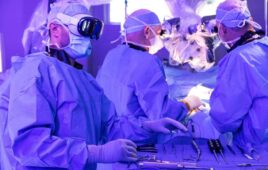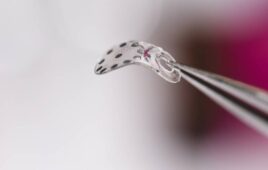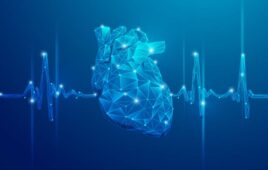Products developed for medical application face specific restraints geared to ensuring that no harm comes to patients. One restraint is time; either equipment access or market issues force faster design and testing of prototypes. For engineers at one manufacturer of healthcare products, limited access to sterilization equipment could have affected the number of design prototype iterations they needed to make. The manufacturer, however, uses SL machines to better manage available design time. The use of SL lets them make hundreds of parts with various alterations in just a couple days.
But the engineers had to deal with another issue: in medical applications, the stereolithography material must meet several requirements. It must enable the designed part to mimic the final product as closely as possible, in every way. For specific designs, a clear SL material is required either for medical device housings or fluid flow analysis. Lastly, a new requirement emerging for some products is that of biocompatibility.

Introduced by DSM Somos in 2007, WaterShed XC offers a combination of clarity, durability, and high dimensional stability. Its biocompatibility enables the production of ABS-like prototypes that are USP Class VI approved.
Recently, the engineers needed to create a fixture to hold two products for Gamma sterilization. The task had to be finished within a 10-day window, all the time they had in which to use the Gamma sterilization machine. The fixtures did not need to be sterilized; only the end products held by the fixture needed to be clean. It was important, however, that between the fixtures and the products that there not be any part-to-part contamination, so the engineers needed a biocompatible SL material.
The engineers were used to researching DSM Somos’ SL material datasheets to find a material equivalency before they perform internal testing on a new product and move to prototyping. During their research, they found a new material from Somos, WaterShed XC 11122. Recently this material passed the most severe biological tests of the United States Pharmacopeia (USP) testing to qualify as a USP Class VI material, indicating that it is biocompatible.
The classification allows WaterShed XC to be used in applications that range from medical devices to devices that contact skin, such as hearing aids and dental devices. Tests show it produces dimensionally stable parts that are resistant to water and moisture, making it attractive for applications where skin and moisture contact with the part is required. It looked like a good choice for this particular project.
With WaterShed XC, the engineers created three runs, all within 10 days. The first run involved creating 60 parts with iterations. The second run involved 3 parts that approached the final design. Finally, they did a run of 70 for the final design.
With SL and the right material, the engineers were able to create the various accurate fixtures within the allotted time and meet compatibility requirements. Injection molding, tooling or other processes would have taken too long and would not allow for the multiple iterations within cost constrains.
DSM Somos
www.dsm.com




